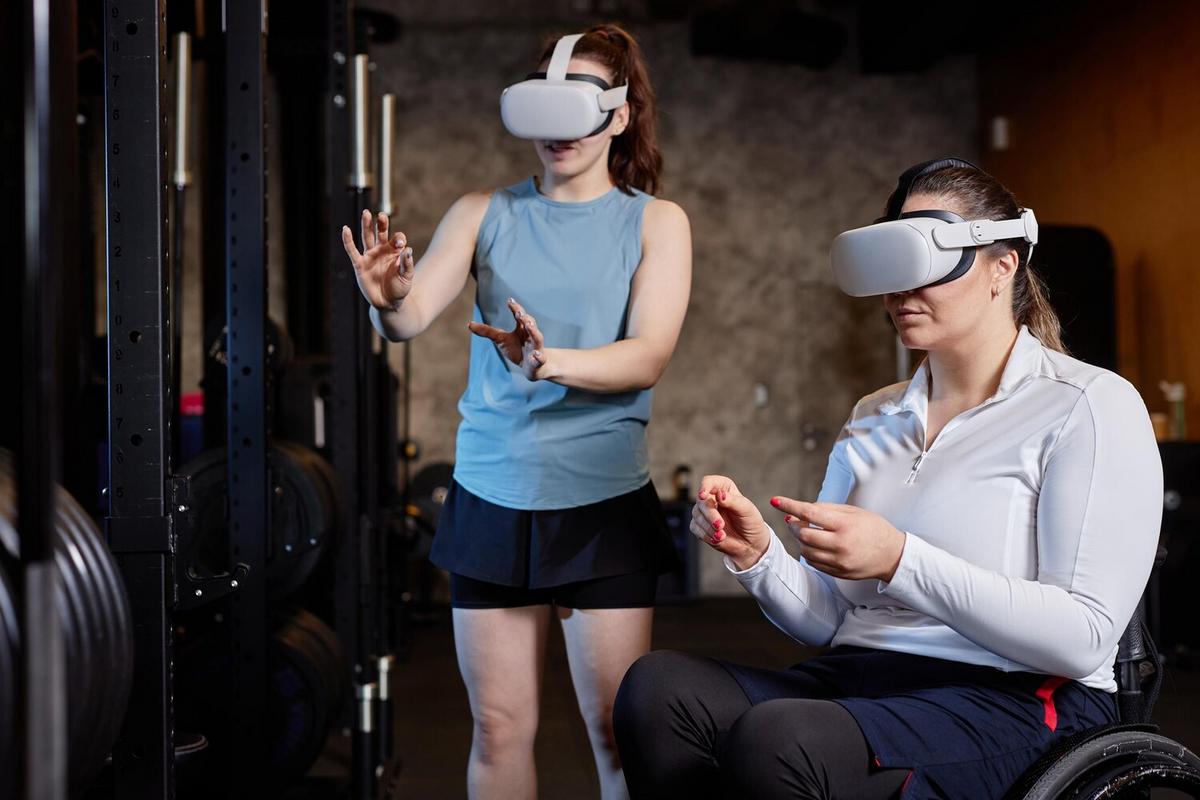
Virtual Reality: The New Frontier for Sports Training
Imagine practicing your golf swing or perfecting a soccer kick without leaving the comfort of your home. Welcome to the world of Virtual Reality (VR) in sports training, where technology meets athleticism to create a revolutionary approach to improving skills and performance.
Exploring the Potential of Virtual Reality in Sports
Virtual Reality is rapidly transforming the landscape of sports training. This innovative technology offers athletes a unique opportunity to practice and refine their skills in an immersive environment. VR provides a realistic simulation that closely resembles real-world sports scenarios, allowing athletes to experience various game situations without the physical strain.
Expert Insights
Renowned sports scientist, Dr. Mark Thompson, suggests that “VR technology is not just a gimmick; it has the potential to enhance training efficiency by providing a safe and controlled environment for athletes to experiment and learn.” Such expert endorsements underscore the growing recognition of VR’s value in sports.
Statistics and Research
According to a study published in the Journal of Sports Science and Medicine, athletes who incorporated VR training into their routines showed a 30% improvement in spatial awareness and decision-making skills. This metric highlights VR’s effectiveness in enhancing cognitive aspects of sports performance.
Real-Life Examples
Several professional sports teams have already embraced VR technology. For instance, a leading football team uses VR to simulate match conditions, allowing players to mentally prepare for different strategies. Similarly, a prominent basketball player credits VR for improving his game analysis and on-court decision-making abilities.
Practical Tips for Athletes
- Start with short VR sessions and gradually increase duration as you become comfortable.
- Focus on specific skills you wish to improve, such as reaction time or tactical understanding.
- Combine VR training with traditional methods for a well-rounded approach.
Benefits of Virtual Reality in Sports Training
| Benefit | Description |
|---|---|
| Reduced Injury Risk | VR allows athletes to practice without physical contact, minimizing injury risks. |
| Enhanced Mental Preparation | Immersive simulations help athletes mentally rehearse game situations. |
| Improved Focus | VR environments eliminate distractions, allowing athletes to concentrate fully. |
| Accessibility | Athletes can train anytime, anywhere, without needing a physical field or court. |
| Performance Analysis | Data from VR sessions can be analyzed to track progress and identify areas for improvement. |
| Skill Acquisition | Repetitive VR training helps in mastering complex skills faster. |
| Motivation | Interactive and engaging VR sessions keep athletes motivated and eager to train. |
| Real-Time Feedback | Instant feedback during VR sessions allows for immediate adjustments and learning. |
Frequently Asked Questions
Is VR training suitable for all sports?
While VR is adaptable, its effectiveness varies by sport. It works well for sports requiring strategic thinking and spatial awareness, like football and basketball.
Do I need expensive equipment for VR training?
Many affordable VR headsets and applications cater to different budgets, making VR accessible for various users.
Can VR replace traditional training methods?
VR is best used as a supplement to traditional training, enhancing skill development and mental preparation.
Conclusion
Virtual Reality is undeniably reshaping sports training, offering athletes an innovative and versatile tool to enhance their skills and performance. As technology continues to evolve, VR’s role in sports is expected to expand, offering even more opportunities for athletes to excel. Embracing VR training can be a game-changer, providing competitive advantages and enriching the training experience. It’s time to step into the virtual world and elevate your sports performance.


